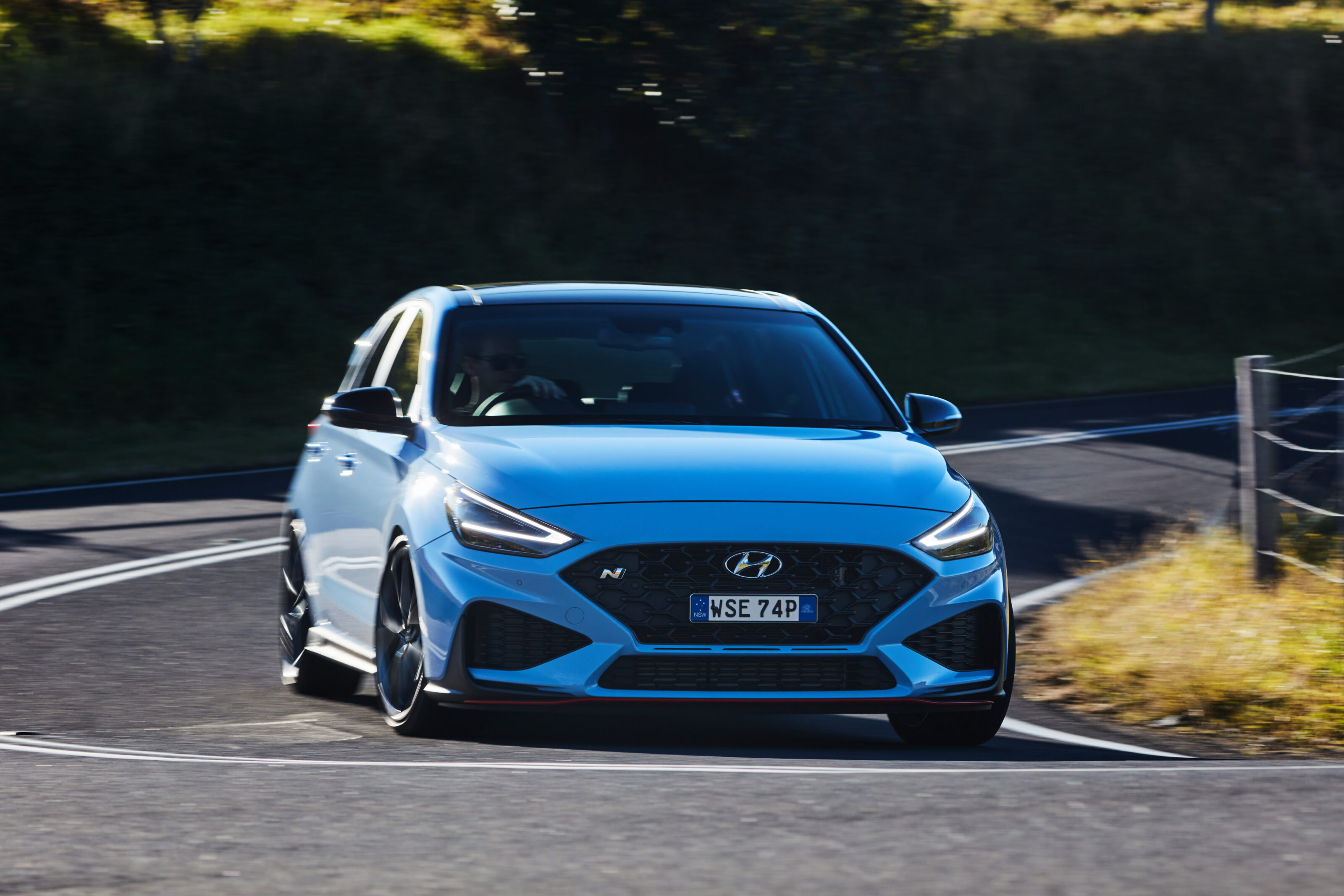
Snapshot
- 2022 i30N gets Hyundai’s eight-speed N-DCT transmission
- 0-100km/h in 5.4 seconds
- Customer deliveries expected to begin in July
Australian pricing for the updated 2022 Hyundai i30 N has been announced, finally bringing availability of an automatic transmission.
Yes, Hyundai’s very own N-DCT eight-speed wet-style dual-clutch transmission is, at long last, available on the i30 N Down Under.
Priced from $44,500 in manual form and $47,500 for the auto, the new i30 N has also scored a raft of visual upgrades over its predecessor, giving it a sharper and more aggressive look.
A host of new lightweight features inside and outside of the performance car are now available too, improving dynamic response significantly.

This includes 19-inch, five double-spoke, alloy wheels wrapped in Pirelli P-Zero tyres, which remove an impressive 14.4kg of unsprung mass compared to its forebearer.
The i30 N is also fitted (Premium variant) with lightweight, one-piece sports bucket seats adorned in leather and Alcantara for the first time.
The electronically adjustable suspension and steering have also been recalibrated, which Hyundai claims results in a car with better ride and handling characteristics.
And the i30 N’s front brake disc size has been increased from 345mm to 360mm for better performance on and off the track.
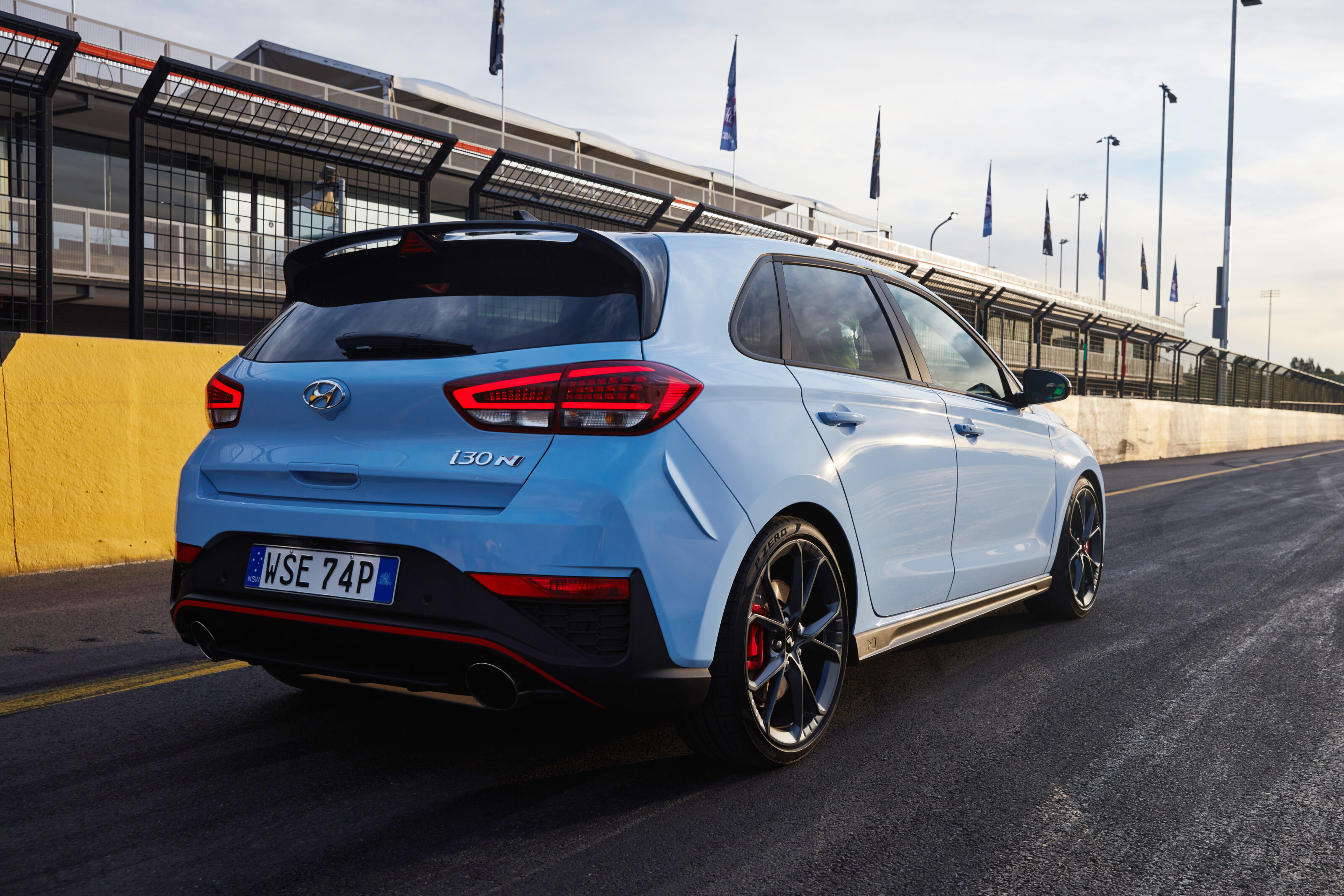
Pricing and model range
The 2022 Hyundai i30 N can be had in two model variants – i30 N and the i30 N Premium.
Premium-spec cars can also be optioned with a sunroof.
Prices before on-road costs are:
| i30 N 6sp | $44,500 |
| i30 N 8sp | $47,500 |
| i30 N Premium 6sp | $47,500 |
| i30 N Premium with sunroof 6sp | $49,000 |
| i30 N Premium with sunroof 8sp | $52,000 |
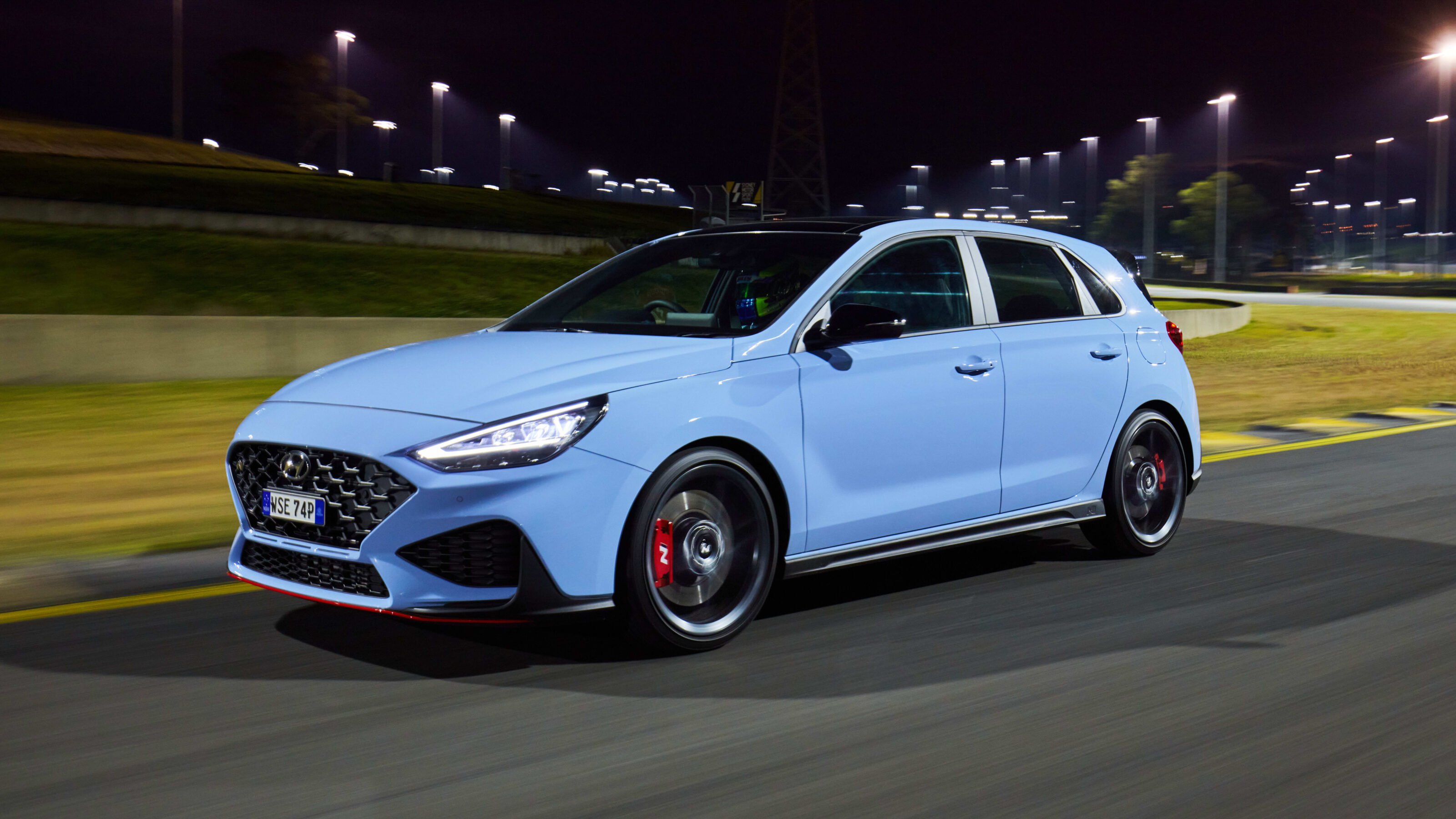
Engine, transmission, and 0-100km/h
The i30 N is once again fitted with the Korean automaker’s T-GDI turbocharged 2.0-litre four-cylinder petrol motor.
However, Hyundai has squeezed four more kilowatts and 39 more Newton-metres from the punchy four-pot, bringing total power outputs to 206kW and 392Nm.
It has also received a new tune, which flattens the power band, providing a more linear and progressive response across the rev-range, producing maximum torque between 2100 and 4700rpm.
The torque is exclusively sent to the front wheels through either the familiar six-speed manual transmission or the aforementioned eight-speed DCT.
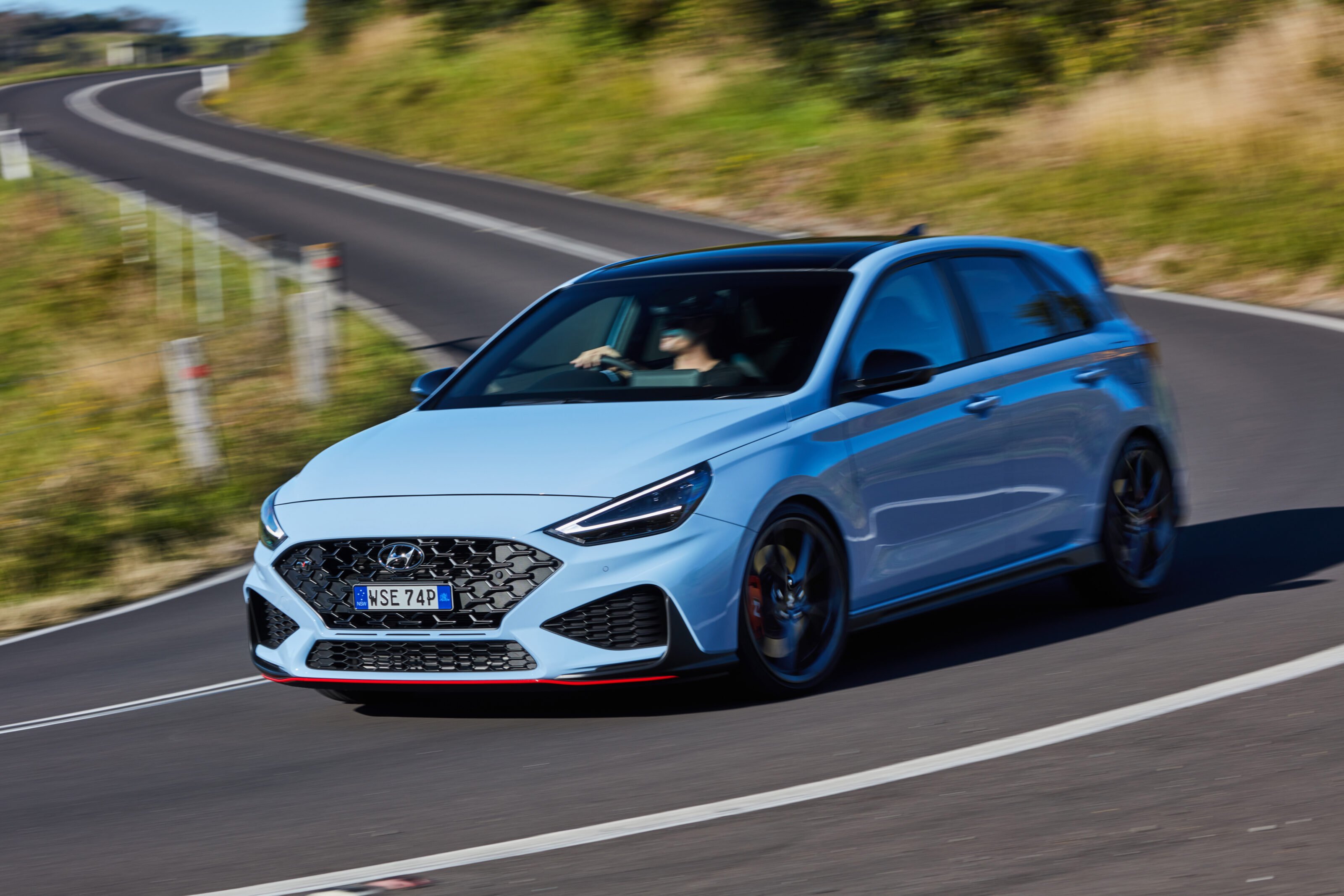
The three-pedalled example can sprint from 0-100km/h in 5.9 seconds (0.2 seconds quicker than its predecessor), while the dual-clutch i30 N slashes another 0.5 seconds off the dash, achieving claimed a 0-100km/h time of 5.4 seconds.
To put that in perspective, Volkswagen’s Golf 8 GTI, the perennial benchmark of what a hot hatch should be, is nearly one second slower to the tonne, with a claimed 0-100km/h of 6.3 seconds.
The new N-DCT has brought with it three N Performance functions – N Grin Shift (NGS), N Power Shift (NPS), and N Track Sense Shift (NTS).

NGS gives the driver maximum power from the engine and transmission for a short 20 second burst, which is activated by pressing a button mounted on the sports steering wheel.
NPS is engaged when the driver applies more than 90 per cent throttle, providing aggressive, discernable gear shifts with a minimal drop in torque.
Finally, NTS enables the car to automatically recognise when the driver is in a dynamic situation or on the racetrack, and it will make adjustments to the powertrain and gearbox accordingly.
There’s also an N Grin Control System, which lets the driver choose from five distinct driving modes: eco, normal, sport, N and N custom.
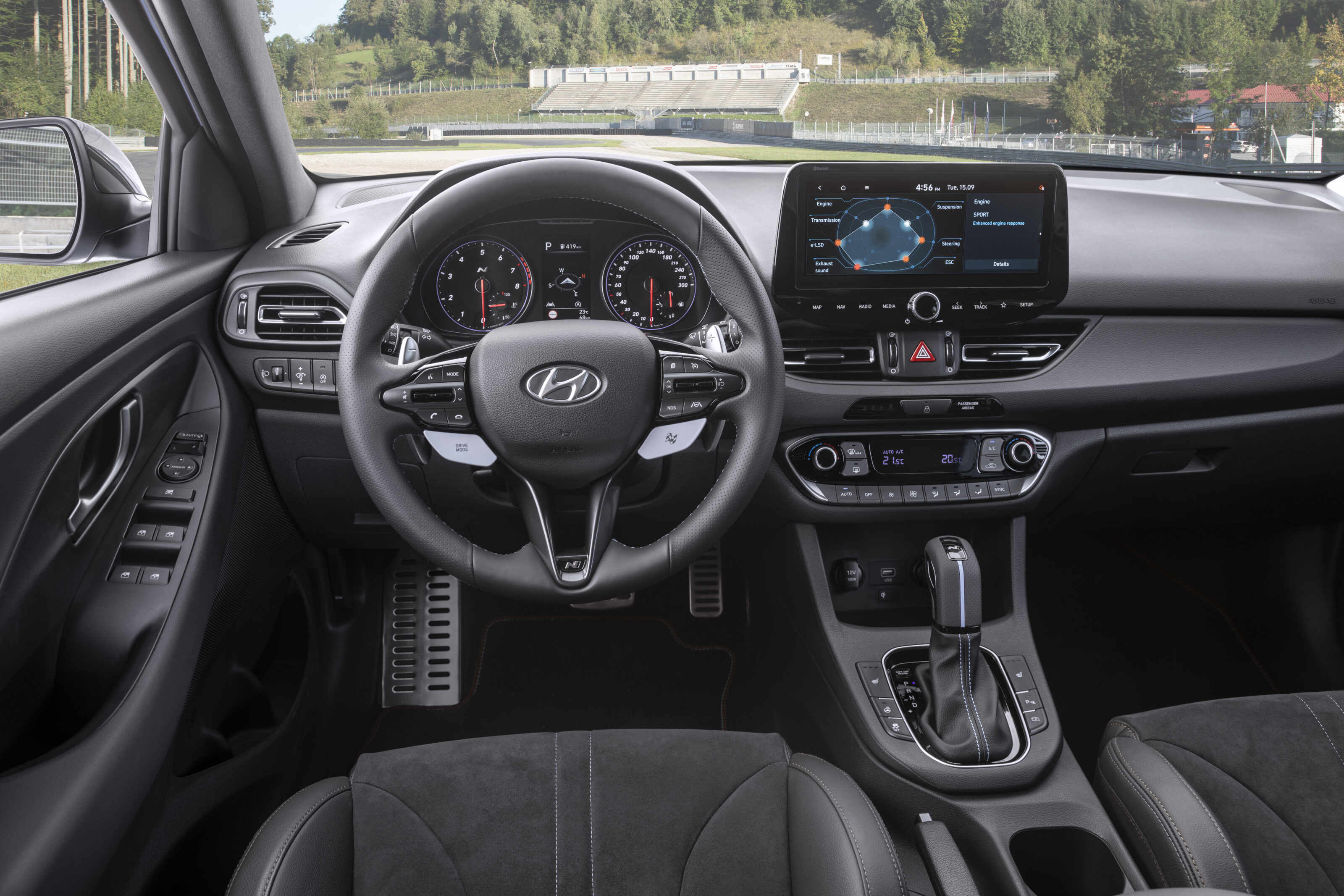
All versions of the i30 N also come equipped with an electronically controlled limited-slip differential (eLSD), which should help to get all the power down to the ground and provide superlative traction out of the corners.
Finally, thanks to the powertrain not meeting the harshest new EU emissions regulations, there’s no petrol particulate filter (PPF) in the exhaust, which means the i30 N’s celebrated ‘snap, crackle, and pop’ exhaust note is still present.
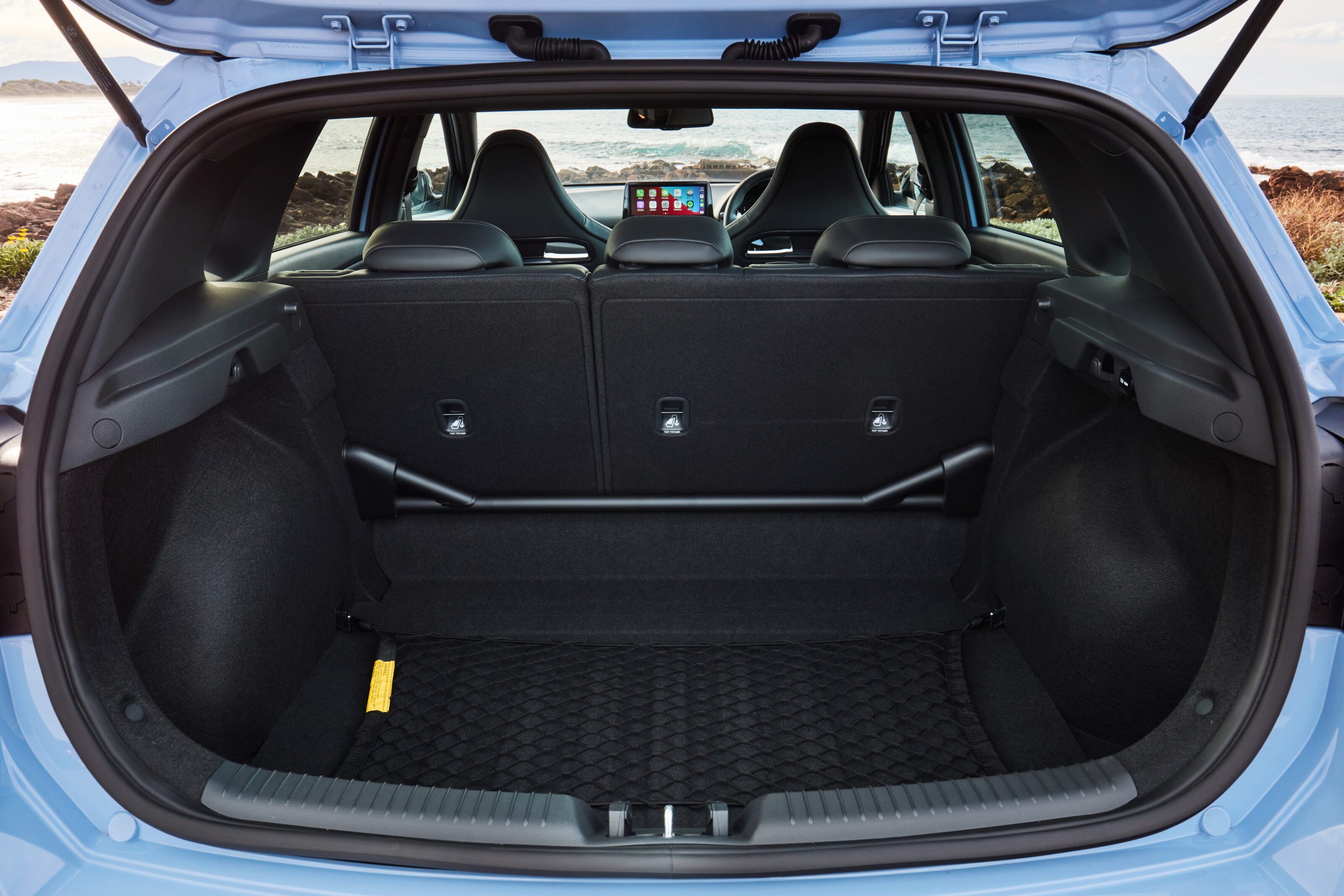
Features
The entry-level i30 N comes with features including:
| N-exclusive interior styling |
| LED daytime running lights |
| LED headlights and front indicators |
| LED taillights |
| LED side repeaters in mirrors |
| Alloy sports pedals |
| Active variable exhaust |
| Sports front bucket seats |
| Electronic controlled suspension |
| Leather-appointed steering wheel |
| 4.2-inch TFT colour supervision cluster |
| Temporary space saver spare wheel |
| 10.25-inch infotainment system with satellite navigation system |
| N performance Driving data system |
| DAB+ digital radio |
| Performance brake package |
| Apple CarPlay and Android Auto |
| Rear stiffness bar |
| Cruise control |
| Rev matching function |
| Dual-zone climate control |
| Power folding exterior mirrors |
| Smart key and push-button start |
| Wireless charging pad |
| Rear spoiler. |
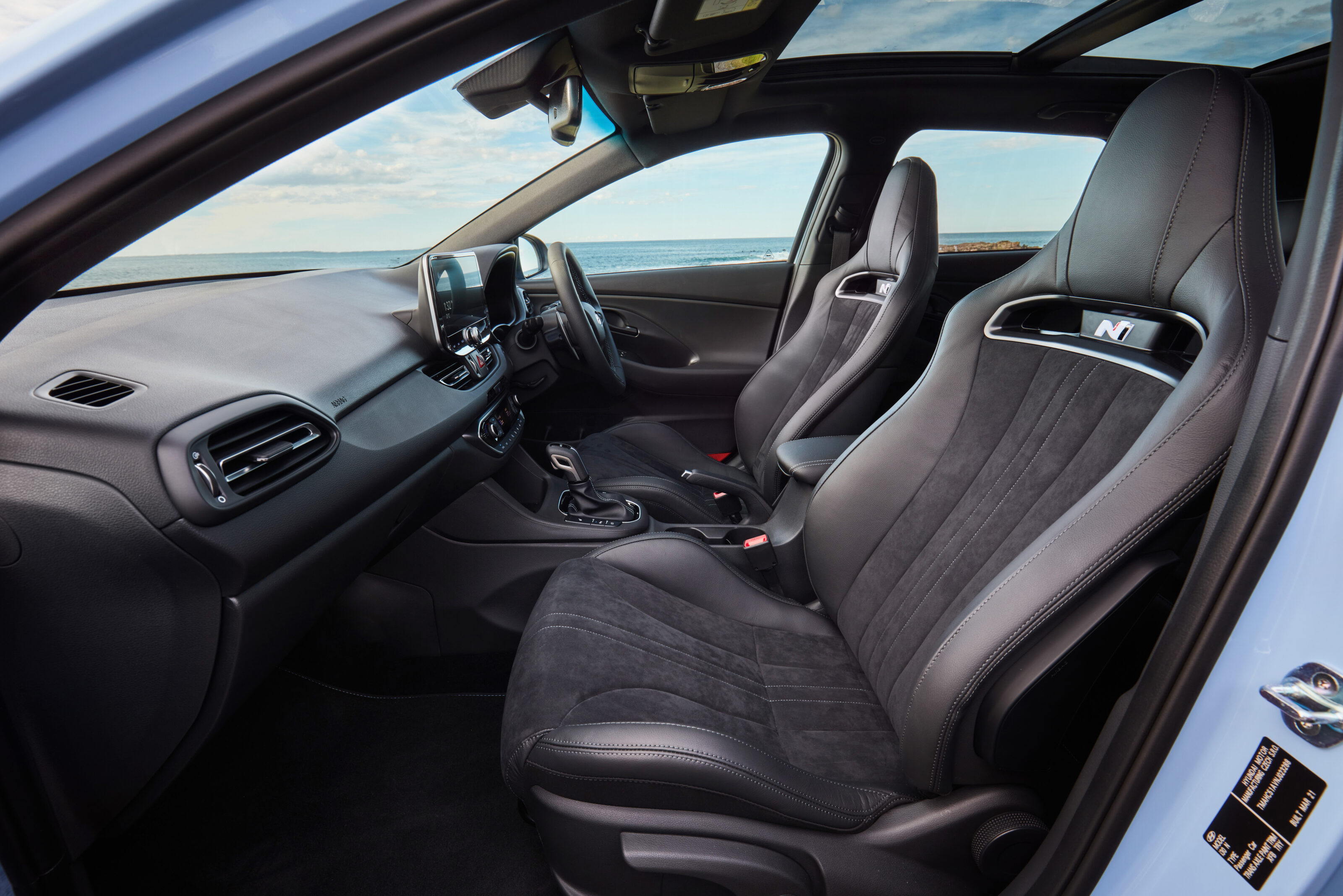
The i30 N Premium adds:
| Parking distance warning u2013 front |
| N light seats u2013 fixed headrest bucket seats |
| Electro-chromatic interior mirror |
| Rain sensing wipers |
| Heated front seats/steering wheel |
| Rear privacy glass |
| Alcantara/leather-appointed interior. |
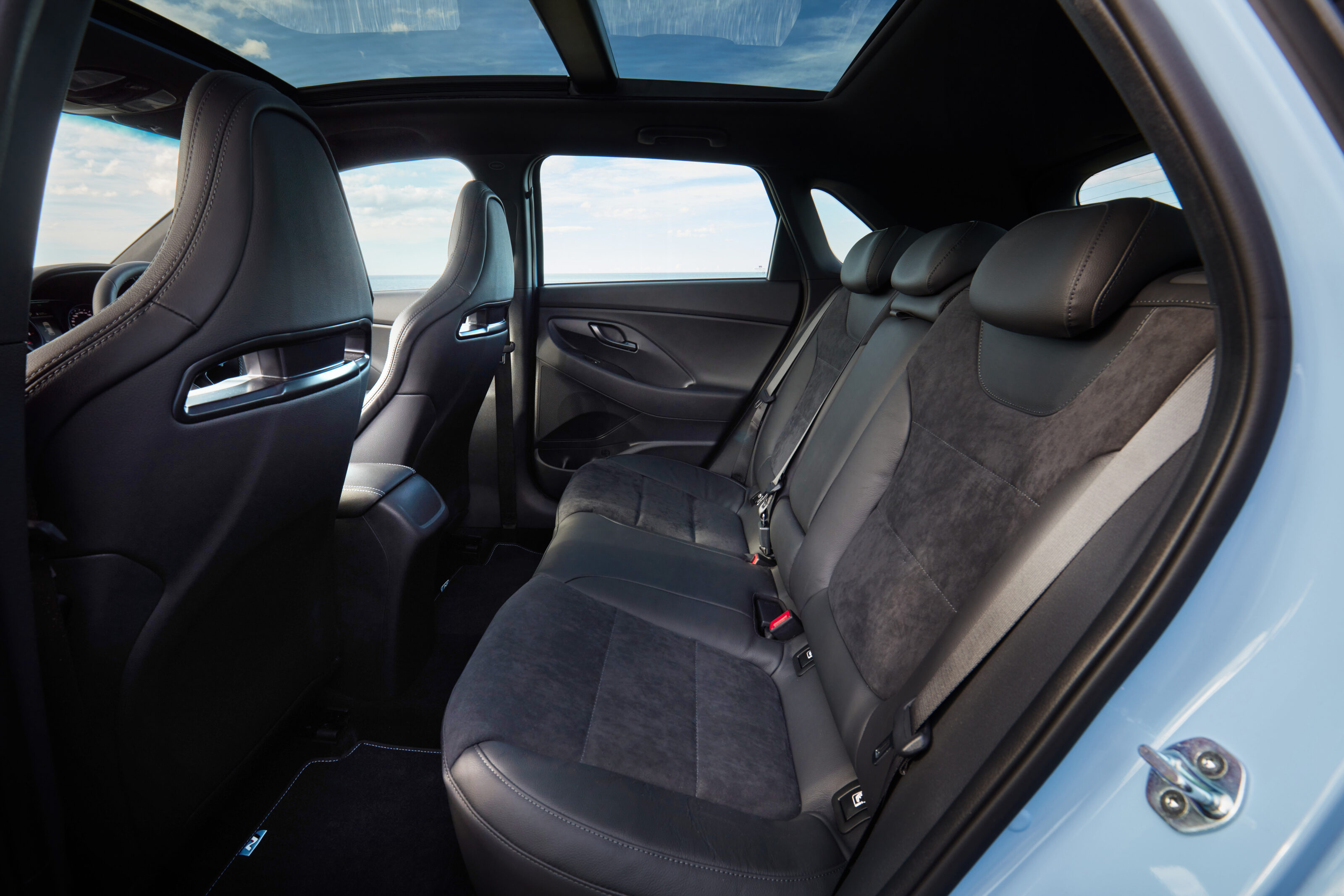
Safety
When the current generation Hyundai i30 was first tested back in 2018, it achieved a five-star ANCAP safety rating.
Standard safety features include:
| Blindspot collision warning |
| Driver attention warning |
| Lane keep assist |
| Lane following assist |
| Parking distance warning u2013 rear |
| Rearview camera |
| Rear cross-traffic collision |
| Forward collision-avoidance assist with city/urban/pedestrian detection. |

Dimensions
The Hyundai i30 N is 4455mm long, 1795mm wide, 1419mm tall, and has a wheelbase measuring 2650mm.
Warranty and Servicing
Like all Hyundai’s, the i30 N comes with a five-year/unlimited-kilometre warranty, which also covers non-competition track driving, including the fitment of performance-oriented tyres.
Hyundai offers both lifetime and pre-paid servicing plans.
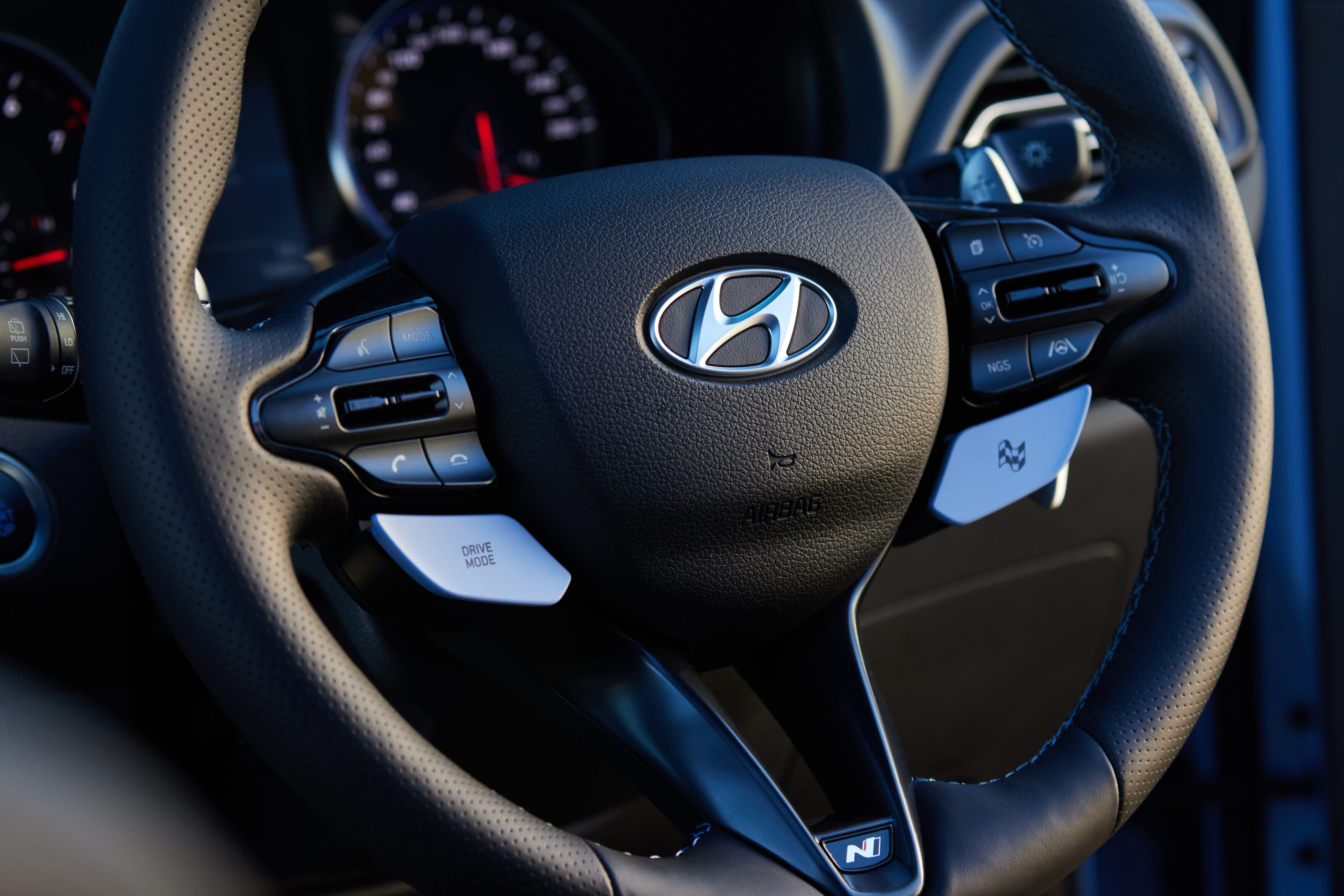
Availability
Deliveries of the i30 N Hatch have begun with Hyundai taking orders ahead of further stock arrivals.
We recommend
-
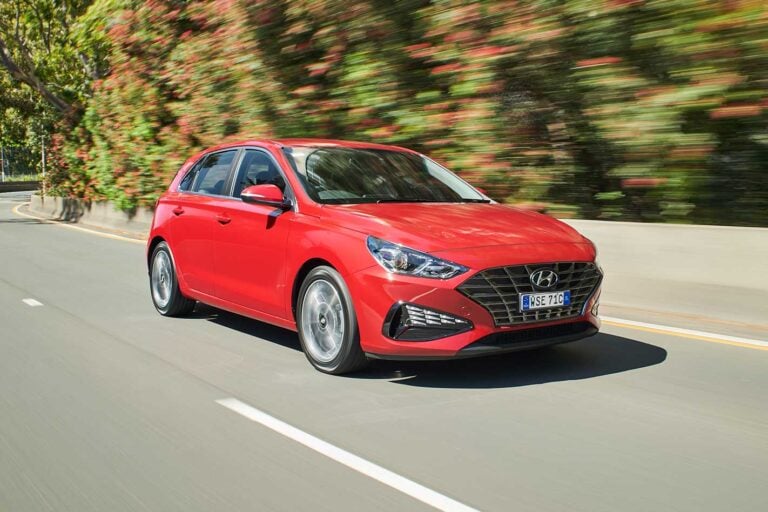 Reviews
Reviews2021 Hyundai i30 review
Hyundai's most basic hatch is now anything but
-
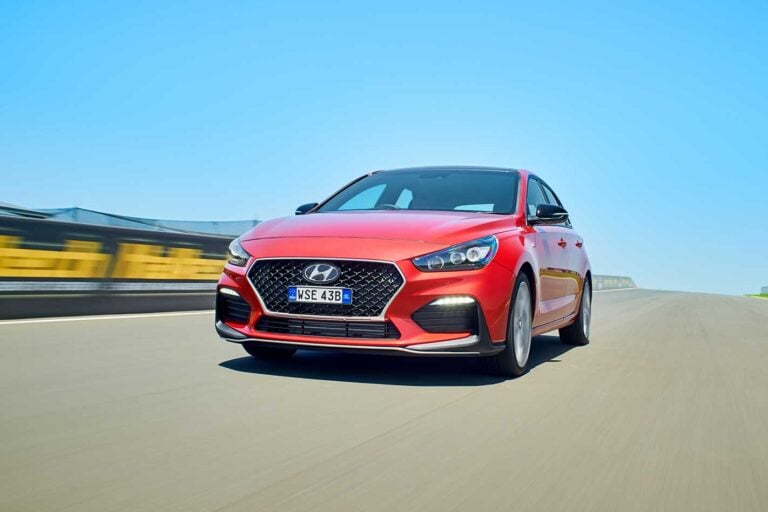 Reviews
Reviews2021 Hyundai i30 N-Line Premium review
Hyundai's i30 N-Line Premium is back with fresh interior tech, but no facelift. Is it any more likeable?
-
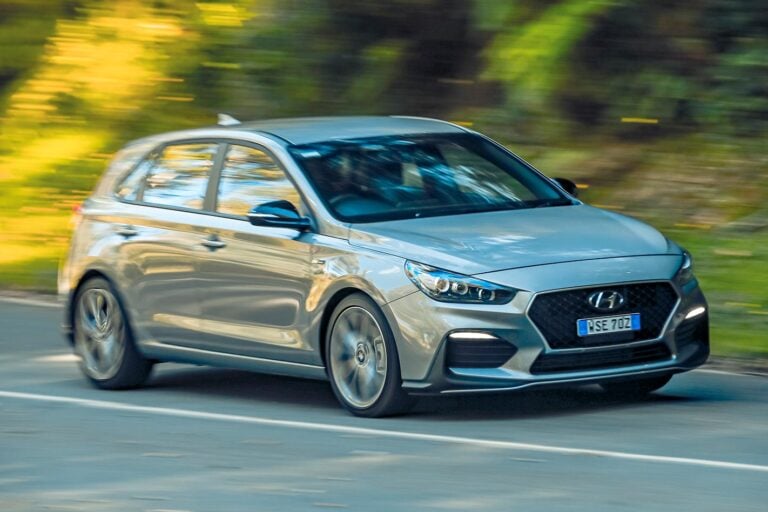 Reviews
Reviews2021 Hyundai i30 N Line review
Hyundai’s sub-N hatchback has hot hatch aspirations



